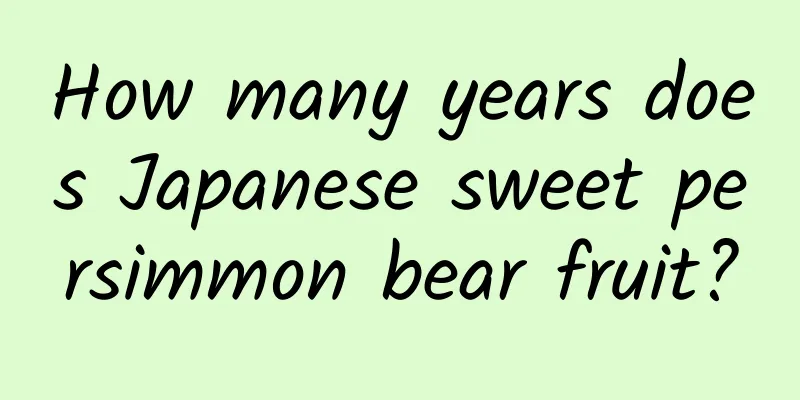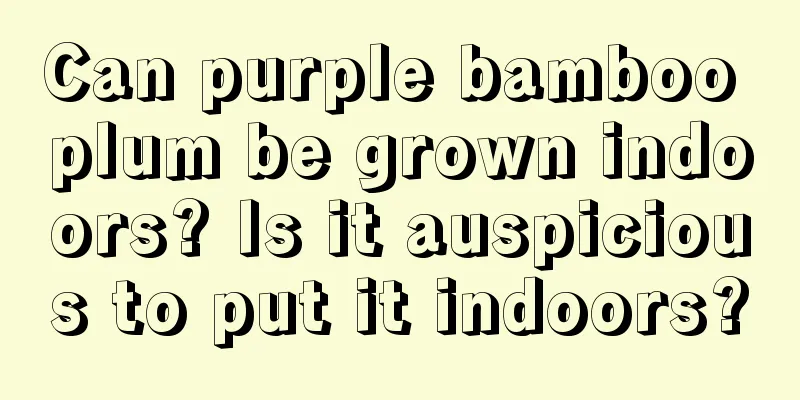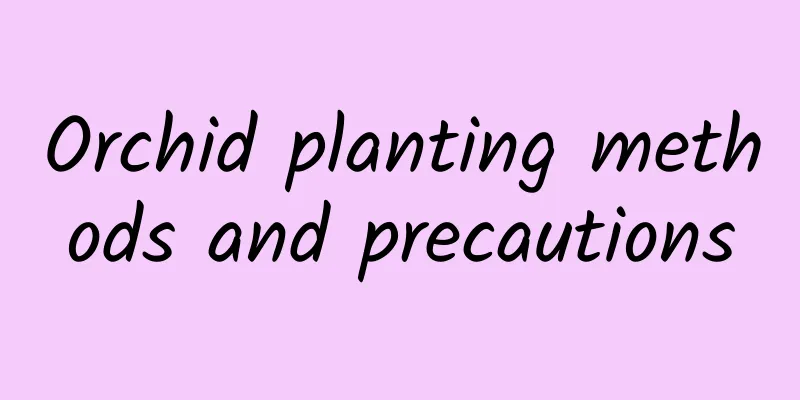How many years does Japanese sweet persimmon bear fruit?

Introduction to Planting Japanese PersimmonJapanese sweet persimmon prefers a warm environment and is suitable for planting in areas with an average annual temperature of more than 13 degrees to get rid of its astringency. It is prone to frost damage when cultivated in areas with an average annual temperature of 10-13 degrees, and it cannot get rid of its astringency naturally. The most suitable time for transplanting and planting is from December to March of the following year. Japanese sweet persimmon was originally distributed in Japan, and is also commonly cultivated in North Korea and South Korea. It has been introduced and cultivated in Beijing, Shaanxi, Henan, Hebei, Jiangsu, Shandong, Fujian, Hubei, Zhejiang, Shaanxi, Shandong, Hebei, Hunan, Sichuan, Yunnan and other places in China. There are complete sweet persimmons and incomplete sweet persimmons, as well as early-maturing, mid-maturing and late-maturing types. The results of several years of Japanese sweet persimmon cultivationJapanese sweet persimmon can bear fruit 2-3 years after planting. It is suitable for planting in deep, slightly acidic sandy loam. Nitrogen fertilizer is mainly applied in the first 1-2 years after planting, with phosphorus and potassium applied in a thin and frequent manner, preferably once a month. For mature orchards, topdressing is applied three times a year. To improve the quality of the fruit, foliar and foliar fertilizers can also be applied. Why Japanese persimmons don't bear fruitThere are many reasons why Japanese sweet persimmons do not bear fruit: no flower thinning, shade, malnutrition, excessive drought or humidity. We should find the reasons and take measures. Flowers should be thinned out to keep the early bloomers in the middle, the tree beads should face the sun, well-rotted organic fertilizer should be applied, and proper water management should be implemented. Key points for growing Japanese sweet persimmonsIn autumn every year from September to October, base fertilizer is applied by ring or strip fertilization method in combination with intertillage. Organic fertilizer or farmyard manure is applied to young trees that have been planted for 1-2 years and appropriate phosphorus and potassium fertilizers are applied. Organic fertilizer or farmyard manure and superphosphate are applied to trees that are 3 years old and above. Borax and potassium dihydrogen phosphate are sprayed during the flowering period. Urea plus potassium dihydrogen phosphate is sprayed after flowering. Spray once every half a month for 3 times in a row. |
<<: How to change the soil for azalea
>>: What soil is suitable for growing tomatoes?
Recommend
Lily Care Tips, How to Extend the Flowering Period of Lilies
1. Maintenance tips 1. Temperature: The suitable ...
How to promote new buds of tiger lily
Bottom Before we prepare the soil for it, we can ...
How to keep the golden star in winter
1. Temperature It likes to grow in warmer places....
How to grow garlic to get high yield?
With the end of the autumn harvest, the season fo...
Can charcoal ash be used as fertilizer?
Charcoal ash as fertilizer Charcoal ash can be us...
Breeding methods and precautions of Million Bells
1. Breeding methods 1. Light: Although this plant...
Do gardenias bloom in autumn?
1. Do flowers bloom in autumn? It can bloom in au...
Can the leaves of Clivia be planted alive? How to plant Clivia to make it live?
1. Can Clivia leaves be planted alive? The leaves...
Key points for apple tree management in July
July is a critical growing period for apple trees...
Why can't you grow jasmine at home?
1. Maintenance This plant can be grown indoors, b...
Gardenia Flowering Management
1. Sufficient water This plant itself likes moist...
What to do if Monstera grows aerial roots
1. The benefits of aerial roots This plant relies...
Effects of New Litsea cubeba
1. Form Neolitas ovata is a shrub of the genus Ne...
The flower language and cultural background of Chrysanthemi orchid
The flower language and cultural background of Ch...
How to survive the winter for jasmine, potted plants/ground plants/seedlings
1. How to keep potted plants through the winter I...









